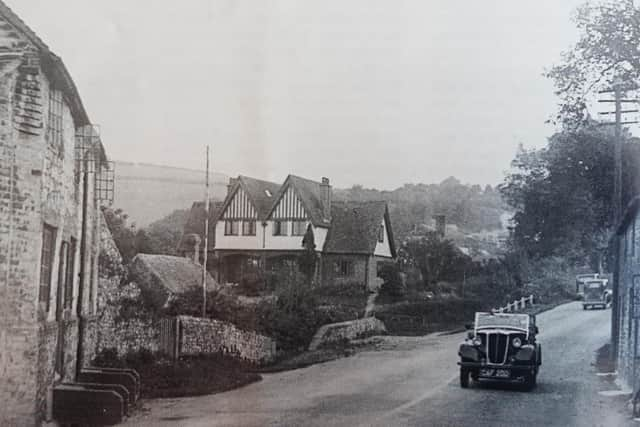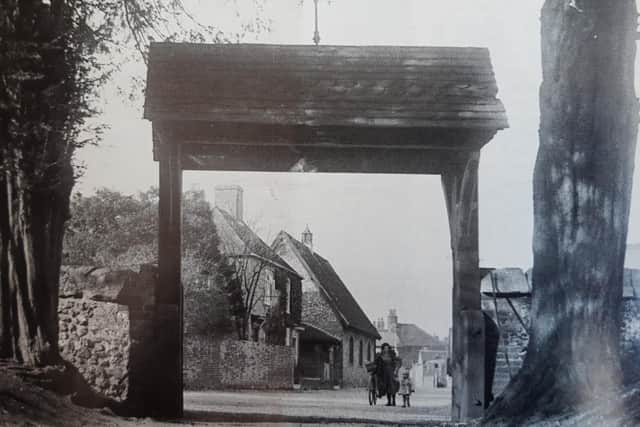Chichester earthquakes: Fear and awe abounded as earth shook in south
and live on Freeview channel 276
It began with a rumble like a long roll of thunder. Within seconds, people throughout the south of England were experiencing a strange swaying sensation.
Chairs started to move, walls shook and items fell from shelves in shops and offices. For almost half a minute the peculiar motion continued, then passed, leaving a bewildered and anxious public in its wake. Earth tremors were for foreign countries – or so they thought.
Advertisement
Hide AdAdvertisement
Hide AdThe evidence showed otherwise. Seismologists throughout the British Isles were recording ‘quite a big shock’ at around midday on June 11, 1938, with its centre possibly in mid-Channel, where a similar shock had been felt the month before. This latest one, though, had a far greater impact.


Also in the news: Battle to save Chichester Harbour: Why the vital saltmarsh is shrinking by three football pitches every year and what can be done to save it
The shock had also been felt in Brussels, Paris, Ostend, Lille and Cologne, with varying degrees of damage. In London, the BBC was inundated with calls from listeners. An official at Broadcasting House described how he was sitting at his desk when he suddenly felt his legs shaking and thought he was ill.


Advertisement
Hide AdAdvertisement
Hide Ad"I looked down and my legs were jittery. Then I saw my chair move,” he said.
In St Bride Street, just off Fleet Street, a Press Association reporter ignored the first sensation but then felt his chair wobble. “I stopped writing for a few seconds and half looked round to see who was pushing the chair – it trembled so vigorously. It continued for some seconds and gradually petered out.”
Another journalist said: “The room seemed to shake us in our seats and a big map on the wall seemed to bulge out and shake.”
In an oil company’s office in nearly Cheapside, furniture wobbled and several clocks stopped exactly at midday. Throughout London, desks shook, pictures swung and in some cases parked cars were rocked nearer pavements.
Advertisement
Hide AdAdvertisement
Hide AdKew Observatory reported ‘a sudden and big earth tremor’ which lasted for about five minutes, with greatest intensity over one minute.
Violent tremors were felt at Ipswich, Ramsgate, Dover and Folkestone, where buildings shook and swayed. At Deal, doors and windows shook, crockery jingled, articles on mantelpieces were shaken and a coffee pot was thrown off a table. Operators at Brighton Telephone Exchange almost had their receivers jolted out of their hands.
To a country more accustomed to reading about earth tremors than experiencing them, the 30-second upheaval caused a minor sensation. Historians, however, were not surprised as the south of England was no stranger to violent tremblings.
There was a long record of them. One of the worst had been felt on a January afternoon in 1834, when an alarm was raised from Chichester to Havant. It began shortly before 3pm, producing ‘feelings of fear and awe in many persons’, according to the Hampshire Telegraph.
Advertisement
Hide AdAdvertisement
Hide AdThe newspaper’s report continued: “Its effects were more visible at Chichester, Emsworth, Havant and Purbrook, where, in many of the houses, the convulsive motion shook the furniture and appeared to threaten destruction to the premises, the inmates becoming so greatly alarmed as to run to and from each other’s bedrooms for aid and shelter."
Gossip was everywhere and a thousand strange theories were put forward for what was described as an earthquake. Some thought underground streams had dissolved the salt in the earth, causing it to collapse. Others suspected that underground rivers had washed away huge boulders, which caused the earth to shake as they were loosened. A few put it down to ‘the agency of the electrical fluid’.
The Hampshire Telegraph, for one, was not to be drawn on any of these theories. It informed readers: "This, like many other phenomena rounded, cannot rest upon the doubtful evidence of man. It must be referred to the wisdom of the Creator and that order of nature which He hath established.”
It did, however, remind its subscribers of an even earlier tremor, the great earthquake of October 25, 1734, which had caused the Duke of Richmond to take time off from administering the affairs of his Goodwood estate in order to submit a paper to the Royal Society. His partner in drawing it up was Dr Edward Bayley of Havant, who was described as ‘an eminent physician and distinguished natural philosopher’.
Advertisement
Hide AdAdvertisement
Hide AdTheir paper told how people felt their houses and beds rock ‘with a rumbling noise of the drawers and other moveables’.
It also pointed out what it felt to be a remarkable coincidence in the weather, as in both 1734 and 1834, the earth tremors had followed several months of rain and wind.
